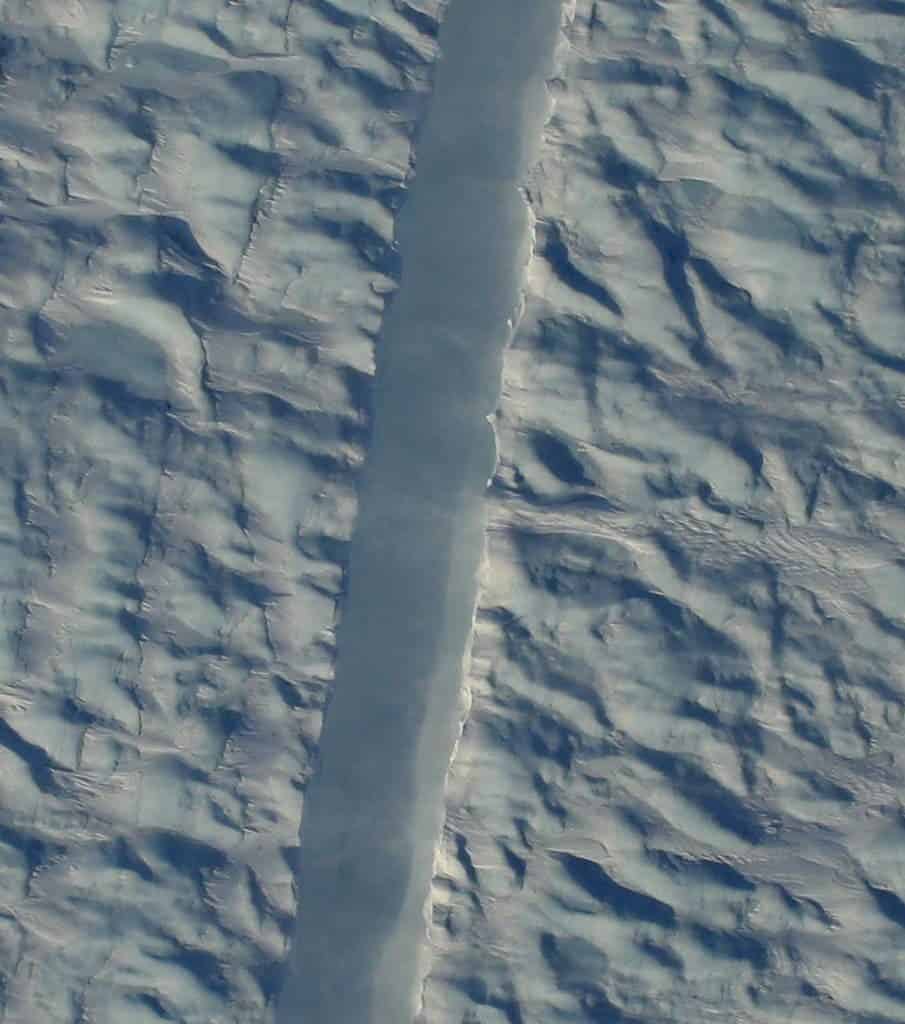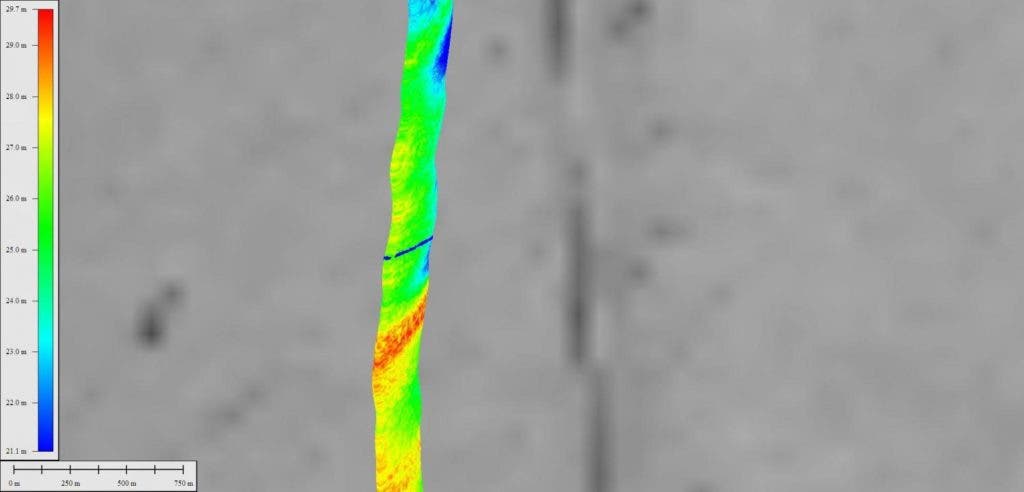An unexpected crack has emerged across a giant Greenland glacier, raising concerns that a big chunk of the glacier might splinter off into the ocean.
Petermann Glacier is a large glacier located in North-West Greenland. It consists of a 70 km (43 mi) long and 15 km (9.3 mi) wide floating ice tongue with a thickness varying from 600 m (2,000 ft) at its grounding line to about 30–80 metres (98–262 ft) at its front. The glacier was first monitored from 2002 through 2009, when a series of satellite images showed that several rifts and cracks were starting to emerge on the glacier, largely due to rising temperatures. A large chunk estimated to be 100 square miles (260 km2) calved in 2010, and now, scientists are worried about a new such event — or potentially, an even larger one. If the two were to merge, then they could break off more than half of the iceberg.
“Last week, an ice sheet covering 100 square miles broke off Greenland,” then-Rep. Edward J. Markey (D-Mass.), the chairman of the Select Committee on Energy Independence and Global Warming, said of the 2010 calving. “This giant ice island is more than four times the size of Manhattan. It is the largest piece of Arctic ice to break free in nearly half a century.”
Researchers working with NASA as part of the IceBridge operation captured the photo above, clearly showing that a new rift has opened near the center of the glacier’s floating ice shelf — relatively close to another, even larger rift which is slowly extending towards the glacier’s center. This new crack is quite bizarre, especially due to its location.
New cracks typically emerge on the extremity of the iceberg, as it interacts with the warmer water and partially starts to melt. But this one is very close to the center of the glacier, suggesting a different mechanism is to blame here. At the moment, it’s not clear what this mechanism is, though Stef Lhermitte, an associate professor at Delft University of Technology in the Netherlands who discovered the crack, suggests the cause might be warmer weather beneath the glacier.
It’s also not clear whether or not the glacier will calve but if it does, the resulting chunk will likely be approximately 50 to 70 square miles in size (130 – 180 square km). This would not raise sea levels as the ice is already floating on the surface of water but it would make room for new ice to begin flowing into the sea which could increase sea levels slightly.











